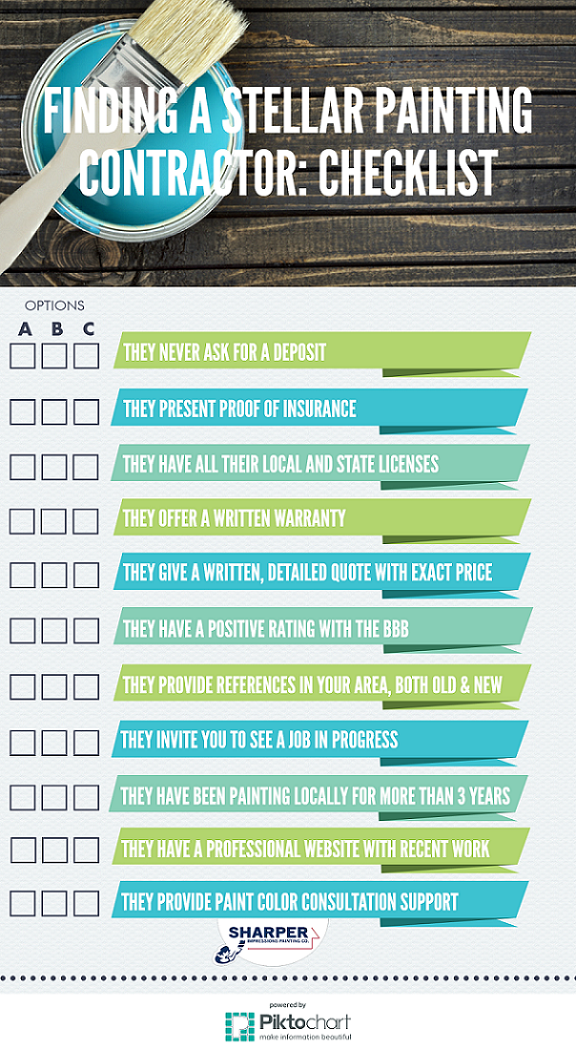Elements To Consider For Industrial Outside Paint By Season: Necessary Info You Need To Have
Elements To Consider For Industrial Outside Paint By Season: Necessary Info You Need To Have
Blog Article
Created By-Carlson Celik
When you're preparing a business external paint project, seasonal aspects can make or damage your results. You'll intend to consider exactly how temperature level and moisture impact paint application and drying times. Selecting the right period can guarantee your paint sticks appropriately and lasts much longer. Yet which periods are truly the very best for this sort of job? Let's discover the crucial elements that can influence your job's success.
The Influence of Temperature Level on Paint Application
When you're planning an industrial external paint task, the temperature level can dramatically affect just how well the paint sticks and dries.
Ideally, you intend to repaint when temperature levels range in between 50 ° F and 85 ° F. If it's too chilly, the paint may not treat properly, causing concerns like peeling off or splitting.
On the other hand, if it's also warm, the paint can dry out as well swiftly, stopping proper bond and resulting in an unequal surface.
You need to additionally consider the moment of day; morning or late afternoon uses cooler temperatures, which can be more beneficial.
Constantly examine the manufacturer's suggestions for the certain paint you're making use of, as they often offer advice on the excellent temperature range for optimal results.
Humidity and Its Effect on Drying Times
Temperature isn't the only environmental variable that affects your business exterior painting task; moisture plays a substantial role as well. High moisture levels can slow down drying out times dramatically, impacting the overall quality of your paint task.
When the air is saturated with wetness, the paint takes longer to treat, which can lead to issues like bad attachment and a higher threat of mildew development. If you're repainting on a specifically damp day, be planned for prolonged wait times between coats.
ceiling color same as walls to check local weather conditions and plan as necessary. Ideally, aim for moisture degrees in between 40% and 70% for ideal drying out.
Keeping these factors in mind ensures your task remains on track and provides a long lasting coating.
Best Seasons for Commercial Outside Painting Projects
What's the best season for your industrial external paint tasks?
Springtime and early autumn are commonly your best bets. During these periods, temperature levels are mild, and moisture levels are usually lower, creating suitable problems for paint application and drying out.
Prevent summer's intense heat, which can trigger paint to completely dry as well promptly, leading to bad attachment and finish. In a similar way, winter's chilly temperature levels can hinder appropriate drying out and curing, taking the chance of the long life of your paint work.
https://house-painter-near-me98766.blogdemls.com/34240254/crucial-questions-to-take-into-consideration-before-choosing-house-painters for days with temperature levels between 50 ° F and 85 ° F for optimal outcomes. https://www.architecturaldigest.com/story/interior-designer-advice in mind to inspect the local weather forecast for rainfall, as damp problems can wreck your project.
Planning around these elements guarantees your painting project runs efficiently and lasts longer.
Verdict
In conclusion, preparing your industrial exterior painting jobs around seasonal considerations can make a considerable difference in the end result. By scheduling job during the excellent temperature levels and moisture degrees, you'll make certain far better attachment and drying times. Bear in mind to watch on regional weather forecasts and pick the right time of year-- springtime and early loss are your best choices. Taking these steps will certainly assist you attain a durable and expert coating that lasts.
